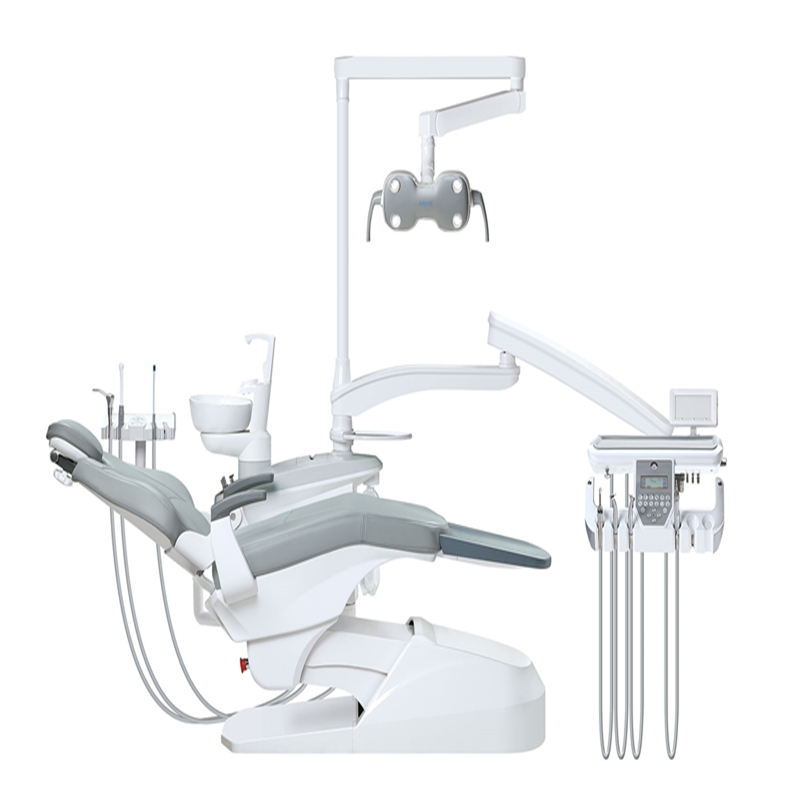How Does A Dental Chair Work?
A dental chair is a necessary piece of equipment in any dental practice, designed to give comfort, accessibility, and functionality to both the patient and the dentist. This article explores the intricate workings of a dental chair, detailing its components, mechanisms, and the technology that enhances patient care and dental procedures.
Anatomy of a Dental Chair
A dental chair is made up of numerous integrated components that operate flawlessly to facilitate various dental operations. Understanding each component's role is crucial to comprehending how a dental chair functions effectively.
Chair Base and Upholstery
The foundation of a dental chair is its base, which supports the entire structure and provides stability. Modern dental chairs often feature ergonomic designs that prioritize patient comfort. The upholstery, which is often constructed of durable materials like leather or synthetic fabrics, is easy to clean and maintain while also improving patient comfort during long-term treatments.
Seat and Backrest Adjustments
Dental chairs are equipped with adjustable seats and backrests to accommodate patients of different heights and provide optimal support during procedures. These adjustments can be controlled electronically or hydraulically, allowing dentists to position patients comfortably for treatments while maintaining proper ergonomic posture.
Headrest and Armrests
The headrest is an important component that supports the patient's head and neck during dental treatments, ensuring stability and comfort throughout the process. Armrests provide additional support and stability for the patient's arms, minimizing fatigue during extended procedures.
Foot Controls and Instrumentation
Foot controls play a vital role in the operation of a dental chair, allowing dentists to adjust chair positions, activate lighting systems, and control various dental instruments without interrupting procedures. This hands-free operation enhances efficiency and workflow management in the dental office.
Mechanisms and Movements
The functionality of a dental chair is enhanced by sophisticated mechanisms that enable precise movements and adjustments essential for dental procedures.
Hydraulic Systems
Many modern dental chairs utilize hydraulic systems to facilitate smooth and controlled movements. Hydraulic actuators allow dentists to quickly modify the chair's height, tilt, and recline settings, giving them optimal access to the patient's oral cavity during treatment.

Electronic Controls
Electronic dental chairs feature advanced control panels that allow dentists to adjust chair settings with precision. These controls may include presets for common positions, such as examination, treatment, and patient entry/exit, optimizing workflow efficiency and patient throughput.
Integrated Lighting and Imaging Systems
Dental chairs often incorporate integrated lighting systems, such as LED lamps, that provide focused illumination of the oral cavity during procedures. Some modern models incorporate imaging technologies directly into the chair design, such as intraoral cameras and X-ray equipment, to improve diagnostic capabilities and treatment plans.
Patient Comfort and Safety Features
In addition to functionality, dental chairs are equipped with features designed to prioritize patient comfort and ensure safety throughout dental procedures.
Ergonomic Design
Ergonomics is a key consideration in dental chair design, with features such as lumbar support, adjustable headrests, and armrests aimed at minimizing patient discomfort and fatigue during prolonged treatments.Ergonomic seats also encourage optimal posture among dental practitioners, lowering the risk of musculoskeletal problems.
Safety Mechanisms
Safety is paramount in dental practice, and modern dental chairs incorporate various safety mechanisms to protect both patients and practitioners. These may include emergency stop buttons, automatic chair locking mechanisms, and collision avoidance systems that prevent accidental chair movements during procedures.
Conclusion
In conclusion, a dental chair is not merely a piece of furniture but a sophisticated tool that plays a pivotal role in dental practice. As dental technology continues to evolve, so too will the capabilities and functionalities of dental chairs, ensuring ongoing enhancements in dental care delivery.



Leave a comment